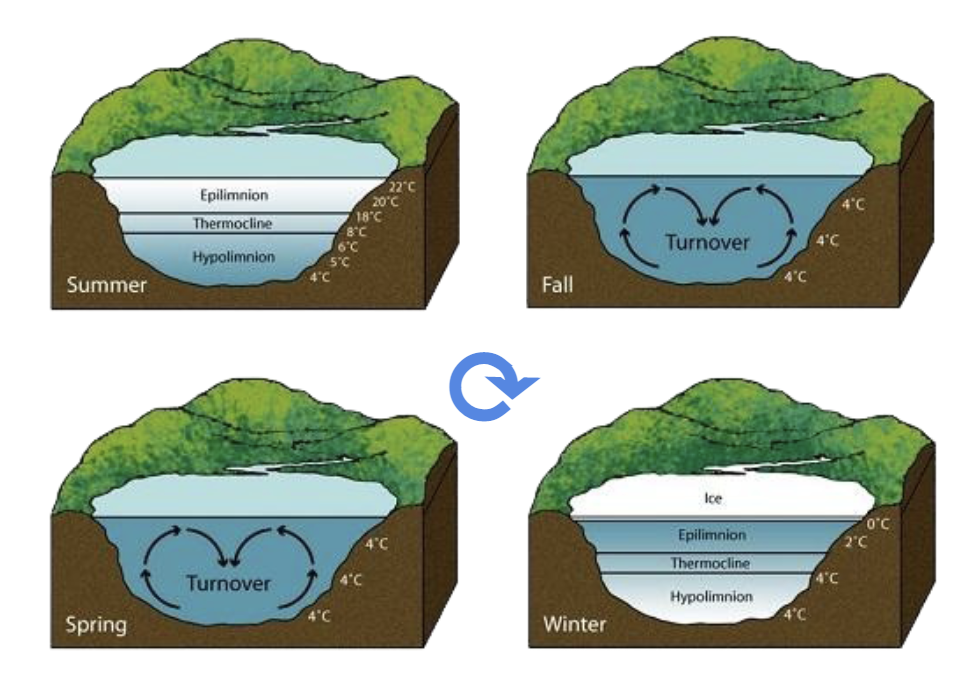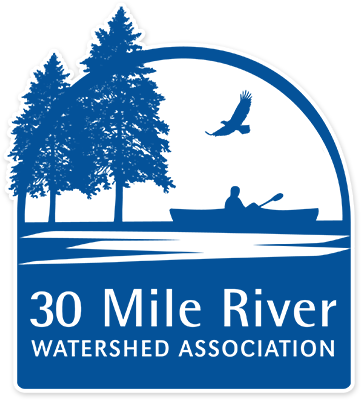Twice a year, during the spring and fall, a natural occurrence called lake turnover happens. Lake turnover is when the water within deeper lakes and ponds mixes together, causing water temperature and dissolved oxygen concentrations to be consistent from the surface to the bottom. In the summer, most lakes are thermally stratified with the warmest (least dense) water at the surface, and the coldest (most dense) water at the lake bottom at a temperature of 4°C or 39.2°F. As air temperatures get colder in the fall, the surface of the lake cools and eventually reaches the temperature at which water is most dense (4°C). The water at the lake surface then sinks to the bottom and pushes the relatively warmer water below it up to the surface – mixing or turning over the lake until the entire water column reaches 4°C. As fall turns into winter, temperatures at the lake surface will cool the water below 4°C, at which point it becomes less dense, and freezes into ice.
Turnover is critical for lake ecosystems because it replenishes and redistributes oxygen and nutrients throughout the water column. During stratification, these layers don’t mix and oxygen can become depleted from the bottom layer due to decomposition and respiration. With a changing climate causing shorter winters and warmer temperatures, lakes are showing signs of stratification for longer amounts of time, causing lake turnover to happen later in the fall and earlier in the spring. This shift in turnover time is particularly harmful because when dissolved oxygen (DO) levels are low (DO <2ppm) at the lake bottom, a chemical reaction can occur where phosphorus is released back into the lake from the bottom sediments. During turnover, the phosphorus released from the sediments becomes available to algae in the sunlit top layer. This all means that the longer the stratification, the longer this chemical reaction of phosphorus release has the opportunity to occur, increasing the amounts available to algae.
Photo: National Geographic Society

This article was included in 30 Mile’s October 2024 newsletter. To view the full newsletter, click here.
